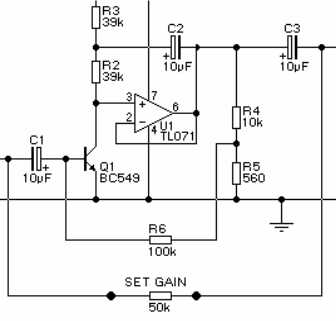Mic Preamps
Mic Preamps take the relatively weak mic signal and boost it to a usable level.
Since a mic level signal is such low power, it requires a significant boost before the signal can be effectively recorded.
But don't worry about having to buy another piece of gear as these will be included as part of your audio interface.
Certain audio interfaces will have combination XLR/TRS jacks that can accept either connector type.
As a result they can be used for either mic inputs or instrument inputs.
The gain can be adjusted the same way regardless of whether you use a mic or instrument level signal as the input.
This allows you to standardize the inputs across the board for all the various instruments and equipment you have coming into the AI.
To get an idea of what the standard XLR and combo jack look like, visit the XLR Cable Page.
Remember that when using a direct box to record straight into your interface that the output is always a balanced XLR connection.

It's possible to buy a stand alone mic pre that you'd need to integrate separately into your home studio setup, but I wouldn't recommend it.
The price tag on these units can skyrocket, and the added quality will be lost unless you have equally high quality mics, cables, as well as a treated acoustic space.
The decision to buy individual mic pres takes you into a whole other (mega expensive) world of recording usually left to professional studios with professional budgets.
For the rest of us you will have no problem with the mic preamps that come standard on many affordable audio interfaces or mixing consoles.
If you do go down this road just keep in mind you'll need an audio interface anyway for it's A/D conversion capability so you'll be adding to the overall cost, not just exchanging one piece of gear for another.









